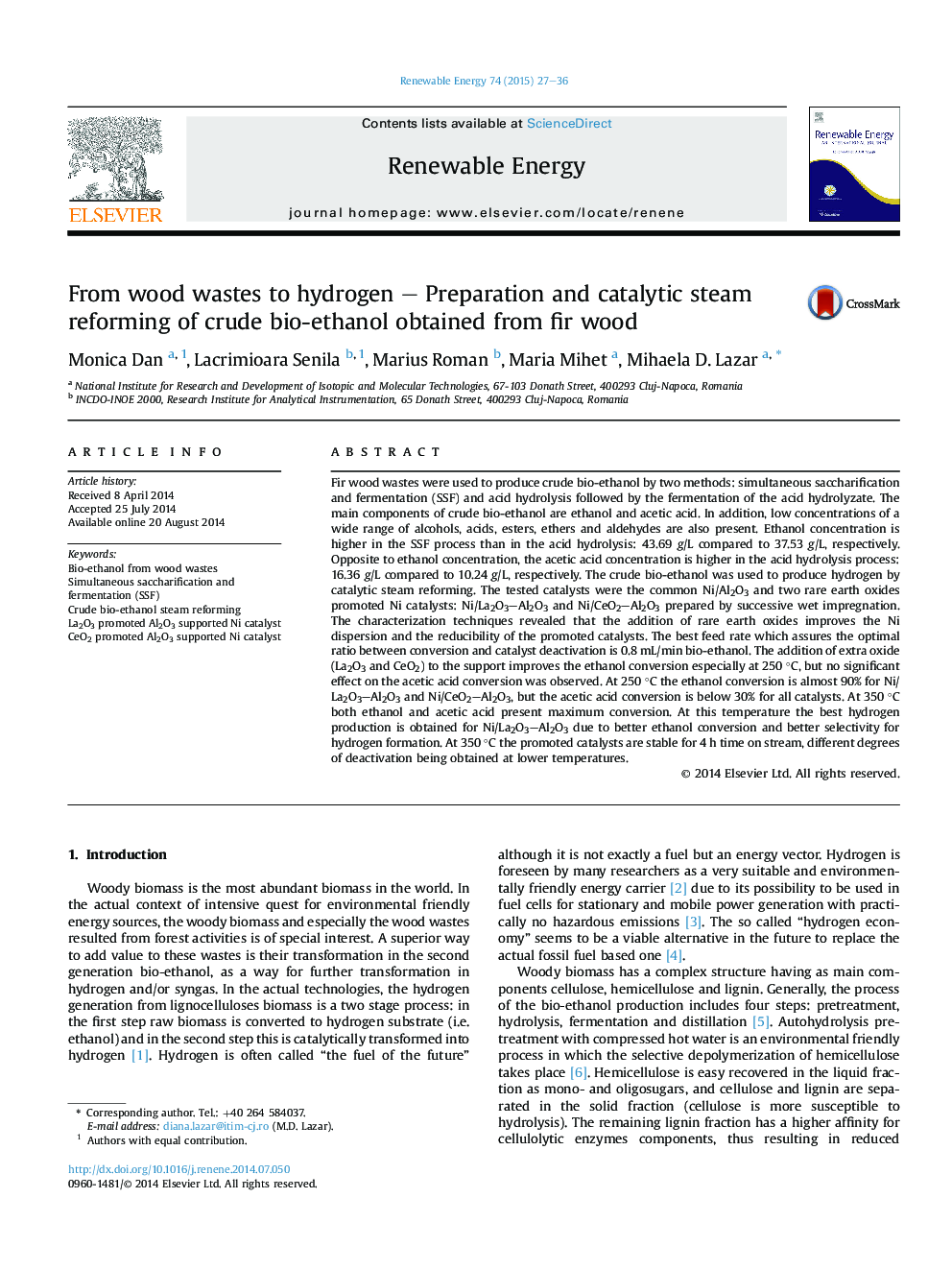| Article ID | Journal | Published Year | Pages | File Type |
|---|---|---|---|---|
| 299950 | Renewable Energy | 2015 | 10 Pages |
•Crude bio-ethanol produced from fir wood wastes by two hydrolysis methods.•The main components of the crude bio-ethanol are ethanol and acetic acid.•Steam reforming of crude bio-ethanol on Ni/Al2O3, Ni/La2O3–Al2O3 and Ni/CeO2–Al2O3.•At 350 °C ethanol and acetic acid present maximum conversion on promoted catalysts.•The best hydrogen production is obtained for Ni/La2O3–Al2O3 catalyst.
Fir wood wastes were used to produce crude bio-ethanol by two methods: simultaneous saccharification and fermentation (SSF) and acid hydrolysis followed by the fermentation of the acid hydrolyzate. The main components of crude bio-ethanol are ethanol and acetic acid. In addition, low concentrations of a wide range of alcohols, acids, esters, ethers and aldehydes are also present. Ethanol concentration is higher in the SSF process than in the acid hydrolysis: 43.69 g/L compared to 37.53 g/L, respectively. Opposite to ethanol concentration, the acetic acid concentration is higher in the acid hydrolysis process: 16.36 g/L compared to 10.24 g/L, respectively. The crude bio-ethanol was used to produce hydrogen by catalytic steam reforming. The tested catalysts were the common Ni/Al2O3 and two rare earth oxides promoted Ni catalysts: Ni/La2O3–Al2O3 and Ni/CeO2–Al2O3 prepared by successive wet impregnation. The characterization techniques revealed that the addition of rare earth oxides improves the Ni dispersion and the reducibility of the promoted catalysts. The best feed rate which assures the optimal ratio between conversion and catalyst deactivation is 0.8 mL/min bio-ethanol. The addition of extra oxide (La2O3 and CeO2) to the support improves the ethanol conversion especially at 250 °C, but no significant effect on the acetic acid conversion was observed. At 250 °C the ethanol conversion is almost 90% for Ni/La2O3–Al2O3 and Ni/CeO2–Al2O3, but the acetic acid conversion is below 30% for all catalysts. At 350 °C both ethanol and acetic acid present maximum conversion. At this temperature the best hydrogen production is obtained for Ni/La2O3–Al2O3 due to better ethanol conversion and better selectivity for hydrogen formation. At 350 °C the promoted catalysts are stable for 4 h time on stream, different degrees of deactivation being obtained at lower temperatures.
